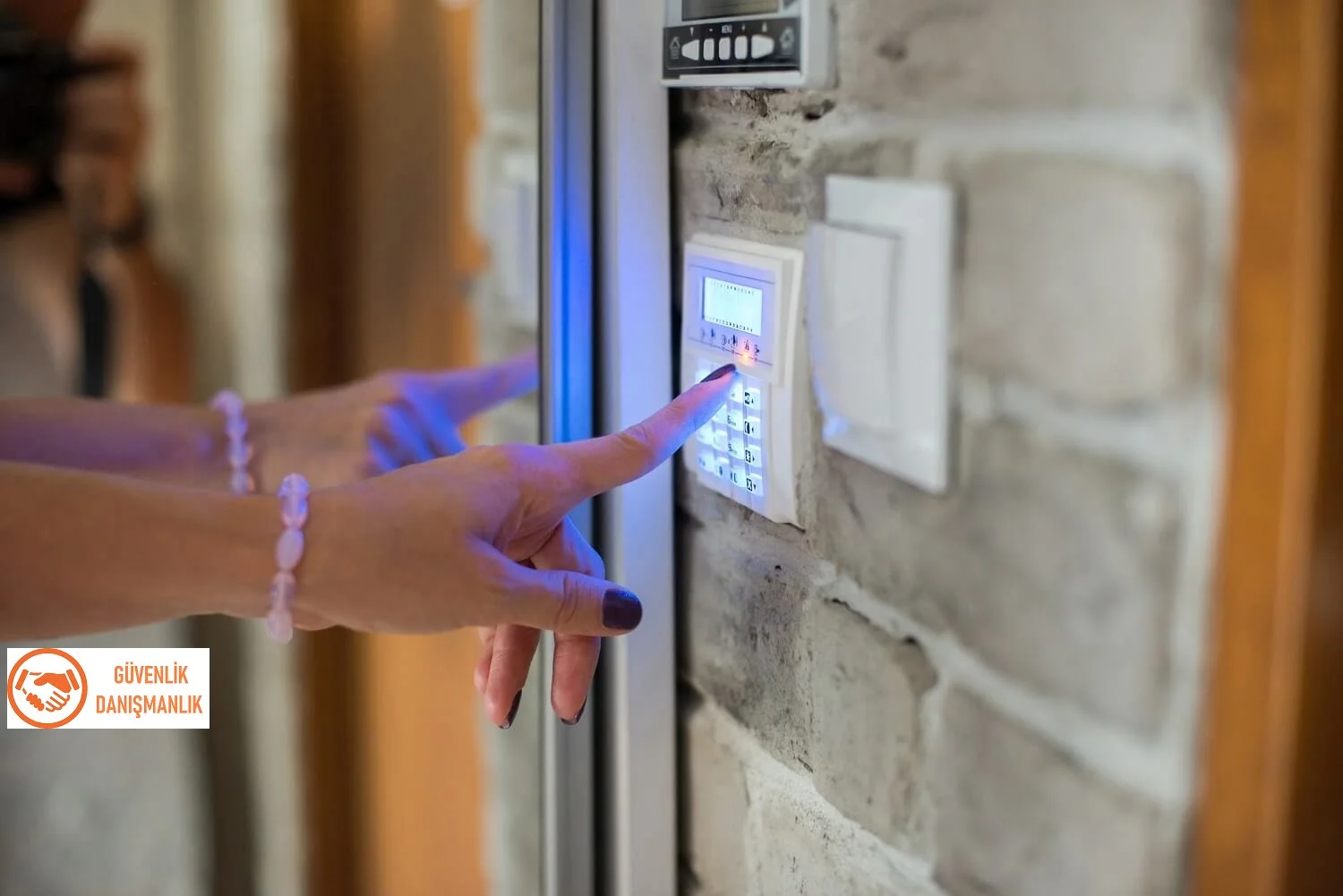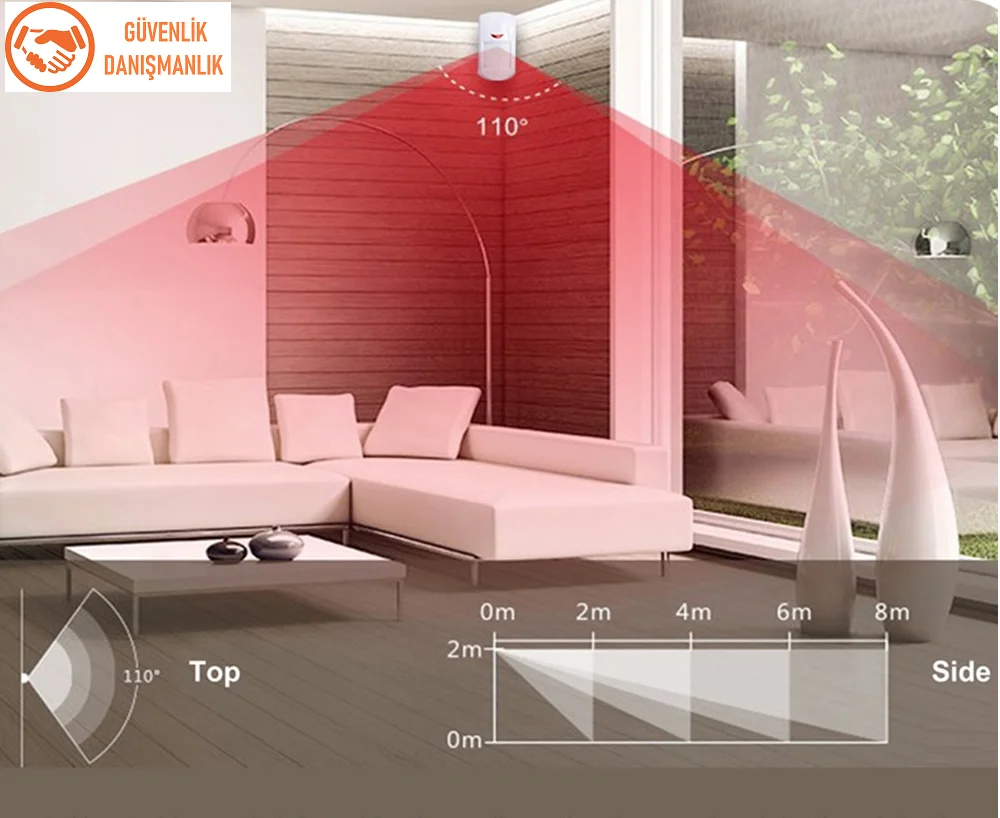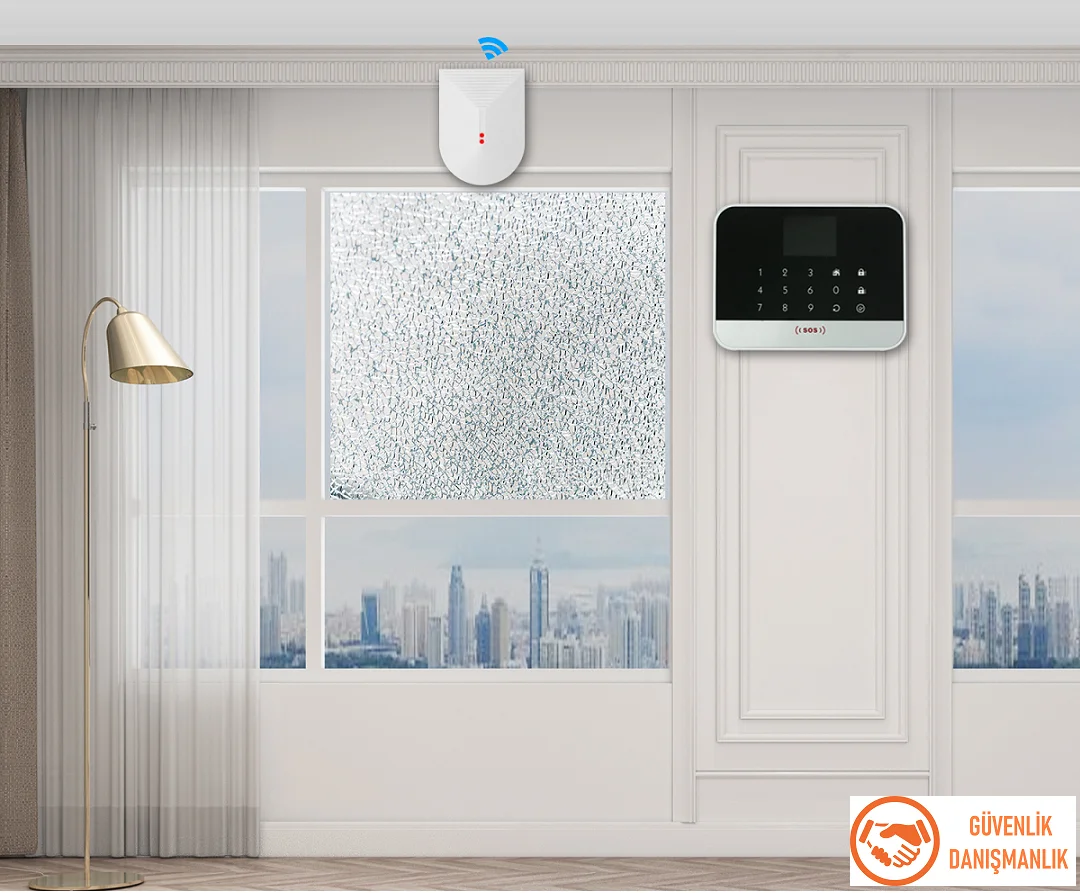The burglar alarm systems we use in our homes and workplaces are made up of many electronic equipment. These electronic equipment are integrated by experienced and knowledgeable technicians and presented to end users as a ready-made system. All of the alarm system equipment that we will provide details about in a burglar alarm system are sold separately and then combined into a whole.

Burglar Alarm System Panel:
The burglar alarm system panel is the brain of the system. It is housed in a box made of polyester, hard plastic or metal, which may vary from brand to brand. The panel consists of an electronic card inside the box. The purpose of the box is to protect the electronic card inside and to provide a bed for the battery that allows the alarm system to operate during power outages, as well as for the transformer that provides energy to the electronic card. Additionally, the box is used to gather the cables inside the panel and prevent an unsightly appearance. The burglar alarm system panel includes a 12V 7Ah maintenance-free dry type battery to prevent it from being affected by power outages.
The most important part of the burglar alarm panel is the electronic card. All system components are connected to this electronic card. The Keypad can be programmed through this electronic card. All components in the system are integrated with each other through this card, which creates a whole burglar alarm system.

Burglar alarm panels are mainly divided according to the number of zones. Panels with different zone numbers such as 4, 8, 16, 32 zones are available. The term “zone” in Turkish means “section”. We select burglar alarm panels with different zone numbers depending on the number of sensors we use. For example, if we have 4 PIR sensors, 4 zones may be sufficient, but when the number of sensors is 8, we have to choose an 8-zone panel.
Burglar Alarm System Keypad:
The keypads are devices with buttons, some with LEDs and some with LCD screens, used to program our alarm system. Keypads are directly connected to the alarm system panel. Using the buttons on the keypad, we can easily control the program loaded onto the alarm panel’s card. This allows us to easily program the alarm system, set and disarm the alarm, and perform other functions.

Although technicians who install the burglar alarm system can program it using the keypad, the general purpose of users is usually to activate (set) or deactivate (unset) the alarm system via the keypad. LED keypads are often preferred because they are cheaper. Necessary instructions and information can be seen on the keypad through the LEDs, allowing the system to be monitored.
PIR Detector (Motion Detector):
PIR detectors, also known as motion detectors, are sensors that detect any movement in the area they are installed in. As the name suggests, they detect warm moving objects, which can be humans or animals. PIR detectors detect the frequency of heat radiation emitted by humans or animals and thus detect unauthorized entry into a space. They are the most commonly used type of detector in burglar alarm systems, and almost all alarm systems use PIR detectors.
Although PIR detectors are widely used, they are also the most common cause of false alarms in burglar alarm systems. They can cause serious false alarms, especially when installed near air conditioning, ventilation, windows, or facing sunlight. To prevent false alarms caused by pets such as cats and dogs that can be found inside homes, special PIR detectors that do not detect pets (Pet PIR) have been developed. With these special PIR detectors (Pet PIR), we can easily set up our alarm system even if our pets are at home without worrying about false alarms.

The detection principle of PIR detectors is based on the interruption of the beam of infrared rays emitted into the environment. There are several types of PIR detectors, including normal PIR detectors, microwave PIR detectors, and PIR + microwave detectors. Microwave detectors work on the principle of sending out microwave beams that are refracted and returned. Some PIR detectors use both passive infrared and microwave technology. PIR + microwave detectors are the most suitable type of detector to use in terms of detection and false alarms. However, due to their high cost, they are not widely used.
Magnetic Contact (Door and Window Sensor):
Magnetic contact, also known as door or window sensor, is a sensor widely used in burglar alarm systems. Like PIR detectors, it is found in almost all burglar alarm systems and is a small and cost-effective sensor. It is placed at the opening points of doors or windows to detect when they are opened.
The structure of magnetic contact is very simple. It consists of two parts: a magnetized part and a part that is connected to the panel. The magnetized part is mounted on the movable part of the door or window, while the wired part is mounted on the fixed part.
There are different types of magnetic contacts. Recessed magnetic contacts are used in places where aesthetics are important, as they are embedded in the door or window. Roller shutter magnetic contacts, as the name suggests, are used in roller shutters or similar structures in external environments.
Glass Break Detectors:
As the name suggests, a glass break detector is a sensor that detects glass breakage. In other words, it has a structure that can detect the sound waves that spread around when glass is broken. It is recommended to use this detector in places where there are many or large windows when installing an alarm system. It is very effective against burglary attempts that involve breaking glass to gain entry.

The glass break detector is not a sensor type that is widely used like PIR detectors or magnetic contacts. It is an alarm system detector that is particularly used in places such as banks where security is high, mainly due to its expensive cost. However, the prices of these detectors have significantly decreased in recent times. They are still widely used in alarm systems on the market today.
Panic Buttons:
Panic buttons are designed to be pressed in case of any threat such as robbery and danger in the place where we are located, and to notify the Alarm monitoring centers about these situations, so that the relevant law enforcement forces can intervene in the situation. They are not widely used in home alarm systems.

Panik buttons are also commonly installed in some homes, especially for elderly or ill individuals to request help in case of emergency. Panic buttons are mostly used in important places such as banks, places where money or other valuable items are stored, as they are more likely to encounter situations such as theft and robbery.
Gas Detectors:
Gas detectors are similar to smoke and heat detectors used in alarm systems. While smoke detectors detect smoke and heat detectors detect heat, gas detectors detect the presence of gas in the environment. In case of a gas leak, gas detectors alert relevant parties to take necessary precautions.
There are different types of gas detectors available depending on the type of gas they detect. For example, natural gas detectors, LPG detectors, and carbon monoxide detectors are commonly used in homes and workplaces. A natural gas detector detects natural gas leaks, an LPG detector detects LPG gas, and a carbon monoxide detector detects carbon monoxide leaks. Gas detectors can be used together with a burglar alarm system panel or as standalone devices in homes, separate from the alarm system.
External Environment Flashing Siren:
It is one of the important components of the burglar alarm system. Placed outside the area where the alarm is generated, this product emits a loud sound of 120dB and a powerful flashing light during an alarm. This ensures that people inside and outside the alarmed area are notified of the alarm. Another feature of the external siren is that it can be placed outside the area where the alarm is installed in a visible location, which can serve as a deterrent for potential thieves. It indicates that there is an alarm system in place and warns the surrounding area and potential intruders. These sirens are known to have a high deterrent effect.
As we mentioned earlier, the alarm system siren is an important part of the alarm system, and it is connected to the alarm system by a cable. Even if the cable is cut by the thieves, the alarm siren will start ringing. Even if the siren is removed from its location, the siren will continue to sound. The alarm siren contains an internal battery pack or a dry-type battery that allows this situation to occur. Usually, a 6V, 1.5Ah battery is placed inside the siren.
To ensure that the alarm sounds even if it is removed from its location, there are protection switches, protective switches on the cover to prevent tampering with the siren, and a metal protective cover. External sirens are generally safe and sturdy against external impacts. There are metal enclosures inside the siren to protect the electronic and battery parts of the siren. These sirens are not affected by weather conditions such as rain or snow.
Vibration Sensors:
Vibration sensors are an important type of sensor that should be used in some points in every home and workplace alarm system. The vibration sensor is a device that detects any shaking that may occur in the location where it is placed and provides an alarm accordingly. They are generally mounted on the wall and detect vibrations that occur on the wall.
If we give an example of places where valuable items or money are kept, such as a jeweler, you have probably heard from news that thieves broke into the wall. To prevent such situations, vibration sensors are installed on the walls of places like banks and jewelers. These sensors detect any impact on the wall from outside and immediately transmit the situation to the thief alarm panel. It ensures that the panel informs the necessary points about the situation.





